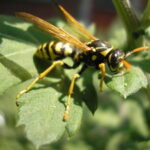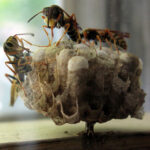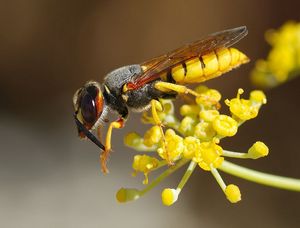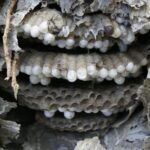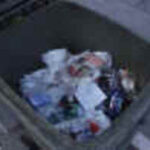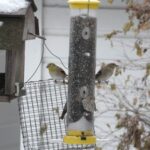For those of us who live in older homes, finding pests indoors is pretty routine. Most of these unwelcome visitors can be dealt with swiftly by using a rolled up newspaper or the bottoms of our shoes, most that is except wasps and yellow jackets.
These invasive pests will attack when provoked and are amazingly hard to kill. How do they end up inside a house in the first place?
Wasps, hornets, and yelllow jackets build their nests from bits of chewed up wood fiber and their own saliva. It’s this search for nesting material which attracts them to old, unpainted wood, conveniently located in the pockets of space behind the shingles and clapboard siding of older homes. In these hidden places wasps and yellow jackets will build their nests and when the larvae finally hatch, the young gravitate towards the warm interior of our homes.
How do you prevent wasps and yellow jackets from coming indoors?
Plug the gaps in the outside of your home
While it’s impossible to seal all the tiny open spaces in an older home, a homeowner can isolate those areas that seem to be particularly attractive to wasps and yellow jackets. Watch for areas that are seeing lots of yellow jacket activity and plug the gaps in those locations. It’s best to caulk these areas during the early morning when activity is low.
Seal the gaps in the inside of your home
When a bedroom or living area suddenly becomes infested with yellow jackets, the newly hatched babies have somehow found an entrance point into the room. Make a floor to ceiling search around the trim moulding, windows, hardwood floors, lighting fixtures and doors for a narrow crack that is large enough for a wasp or yellow jacket to slip through.
Plugging these access points with caulk is a very effective way of preventing wasps and yellow jackets from entering the living areas of your home. With their route blocked off, they will exit outside instead.
Set bait traps near the house
To prevent the wasps and yellow jackets from building nests in the house to begin with, set up an assortment of wasp and yellow jacket traps in the areas where these insects like to congregate.
The most effective traps are the type sold by garden centers and use concentrated apple juice as bait. Since the apple juice will evaporate quickly during the summer months, the trap will need to be refilled every few days to keep working the most effectively.
Move garbage and food away from the house
Yellow jackets and wasps are highly attracted to over ripe fruits and scraps of meat. To discourage these insects from loitering around the house, always cover the garbage cans and move them as far away as possible. Keep the composter tightly covered and avoid letting your garden produce from over ripening. For back yard barbecues, keeping the food covered and removing dirty dishes as quickly as possible will also discourage yellow jackets from hanging around the yard.
Freshen up the paint
Yellow jackets and wasps seem to avoid wood that’s been painted. If you have peeling paint on the soffits and fascia of your home, a fresh coat of paint will not only protect the wood from rot, but will discourage yellow jackets and wasps from chomping away at the surface.
While there are commercial sprays that can kill the wasps and yellow jackets that are inside your home, a chemical solution isn’t necessarily the best solution for your family and your pets. By sealing up the entry points in your home, relocating the trash cans, and scattering apple cider hornet traps around the yard, you’ll discover that the inside of your home will be a less attractive place for wasps and yellow jackets to gather without having to resort to a can of bug spray.
